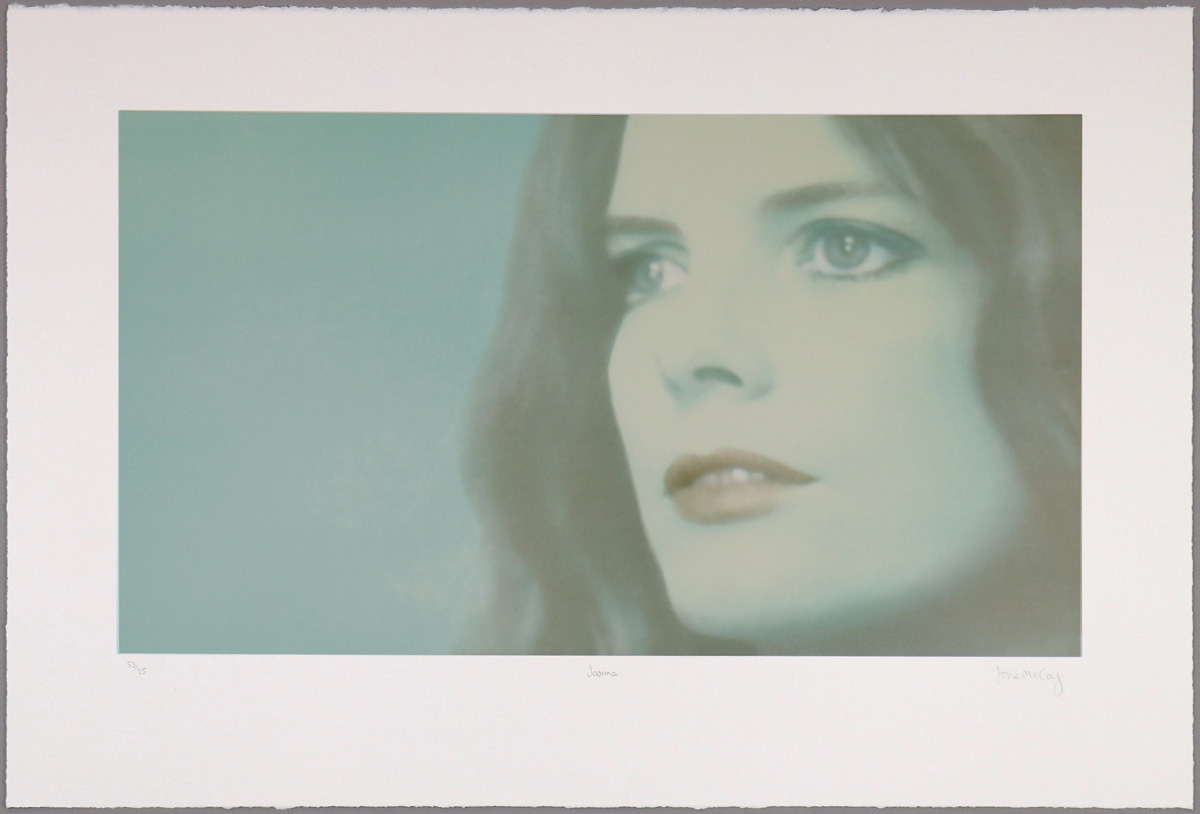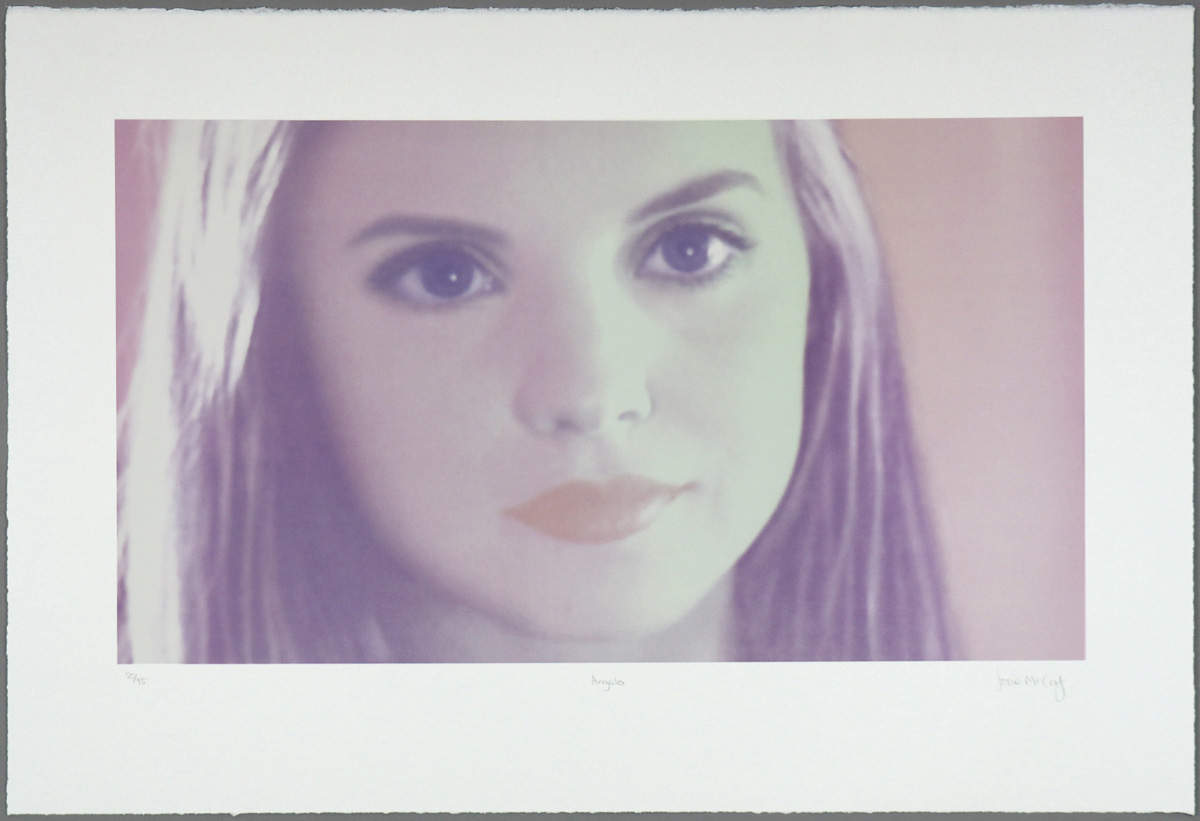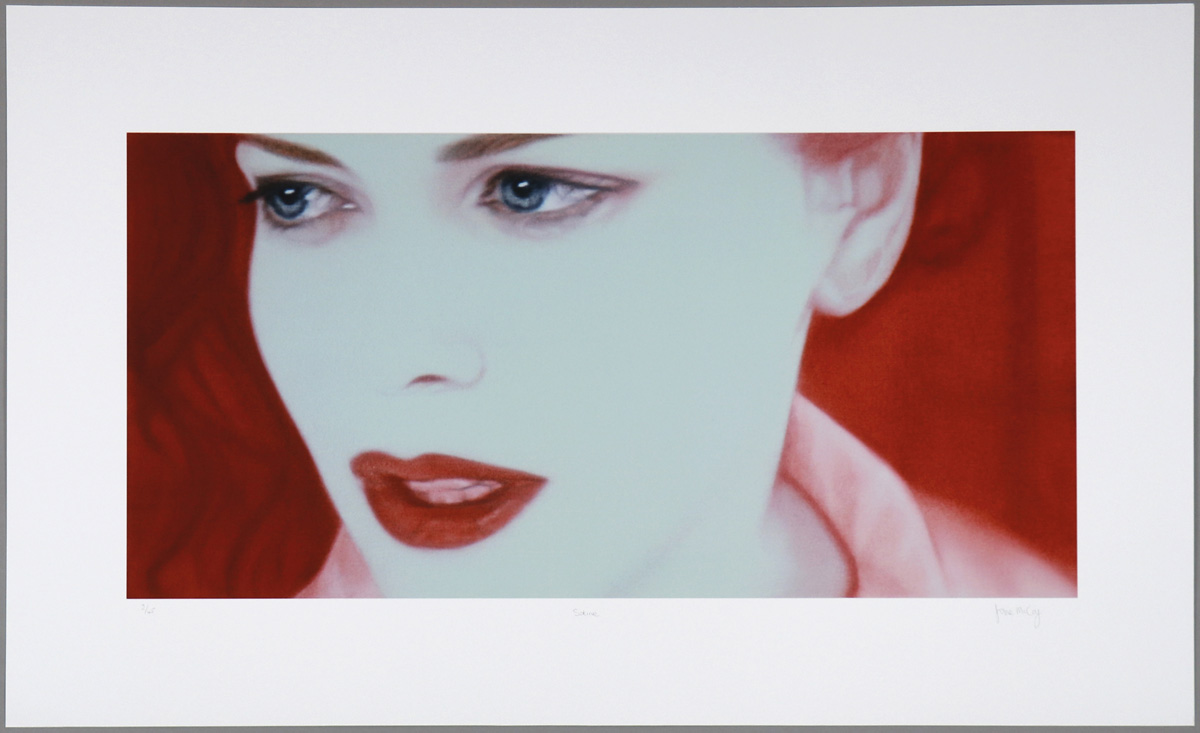Through a lens of luminosity and atomised colour,
Josie McCoy invites viewers beyond the cinema screen, and into a dream-like place where perfect, unblemished faces stare back knowingly. Lynchian femme fatales, such as
Dorothy Vallens and
Audrey Horne contrast the apparently more mainstream protagonists, although behind the airbrushed surfaces, these are all intriguing females. The actresses she depicts are usually recognisable in an instant, and even those that are less so are strangely familiar through their pose or emotional language. Six lithographic editions from the series ‘American Dream’ show a few of McCoy’s most inspirational women in roles which have influenced the artist in her practice.
Kate Winslet seems so typically English; so typically middle-class; and so very Caucasian. In fact, she can be fairly boring to watch, read about and listen to. And yet a majority of the movie audience is so attracted to her. In a few words, the observation by Sean Redmond, a professor of film and stardom at Deakin University in Australia, narrows down the real appeal of the talented actress. Everything about Winslet is familiar, to the extent that it is almost banal. She is the girl next door. Her common chestnut hair and attainable beauty, combined with a kind energy, is a comforting go-between in making people at ease in front of the screen and quickly building a connection. Winslet in her role is authentic, like a friend or a family member.
Many of the women circling McCoy’s artistic practice come from the same place as Winslet: the movies or other parts of showbiz. They are actresses, musicians and contemporary icons whom over the years have caught the attention of McCoy, and through the role they play established a bond with the artist; a connection strong enough for her to eternalise their portraits onto canvas. Her use of fine brushes and smooth layers of tinted hues has the effect of an applied filter, showering the subjects in pastel-soft light and washing away any imperfection. At first glance her paintings seem superficial, almost kitschy, in the way they seemingly endorse today’s celebrity culture. However, below the surface of the dreamlike portraits, she facilitates a dialogue - one that can be easily missed - between the viewer and the subject.

JOSIE MCCOY
Joanna Eberhart, 2005
Edition of 95
70(w) x 40(h) cm
27.76(w) x 15.75(h) inches

JOSIE MCCOY
Joanna Eberhart, 2005
Edition of 95
70(w) x 40(h) cm
27.76(w) x 15.75(h) inches
|
|
|
70(w) x 40(h) cm
27.76(w) x 15.75(h) inches
|
Lithograph on Somerset velvet 300gsm paper
Edition of 95
|
|
McCoy’s fascination with the non-spoken language started to form during her studies at Central St Martins in London, where she graduated in ´99. Characters from the long-running British soap-opera, East Enders, and the sit-com, The Royle Family, were portrayed one by one in unique poses epitomising the performer’s role in the show; a pose that would create an direct report with a viewer and form a captivating link. Like in real life, memories are often triggered by a single frame, a colour, or a smell from which a more complex experience is recalled. Engaging spectators - and potentially bring to mind the emotions felt at that moment or film scene - is the core of McCoy’s practice.
Satine belongs to a series of works titled ‘American Dream’ which undeniably has a broad allure. The vivacious yet vulnerable dancer and courtesan, played by Nicole Kidman in the film Moulin Rouge, is portrayed in one of the key scenes where
Satine decides to go for what is best for her career, rather than following her heart. It is a glance burned into the mind of many fans of Moulin Rouge;
Satine’s head slightly turned with teary eyes, and in the background the heavy red velvet curtain of the cabaret theatre.
Apart from that of an occasional character who have won mass audience, like
Satine, McCoy tends to gravitate towards characters that are darker, complex and past R-rated. The idea of a quiet, idyllic suburbia fascinates her, peaking behind closed doors which disrupts the order of apparent normality. Two such characters portrayed are
Angela Hayes in ‘American Beauty’ and
Audrey Horne from Twin Peaks; a made-up town in the pine-country just south of the Canadian border. Both are young women testing the boundaries of adolescence in small-town suburbia where secrets are protected by a white picket fence and a perfectly mowed lawn.
Audrey Horne’s piercing blue eyes and non-expressive mouth connect instantly with people familiar with Twin Peaks, and brings back the roller-coaster of truths uncovered and lies planted by Audrey. She is a confident girl learning to get what she wants; an experience yet to be had by
Angela Hayes, who is shown in more innocent and hazy purple hues.

JOSIE MCCOY
Angela Hayes, 2005
Edition of 95
70(w) x 40(h) cm
27.76(w) x 15.75(h) inches

JOSIE MCCOY
Angela Hayes, 2005
Edition of 95
70(w) x 40(h) cm
27.76(w) x 15.75(h) inches
|
|
|
70(w) x 40(h) cm
27.76(w) x 15.75(h) inches
|
Lithograph on Somerset velvet 300gsm paper
Edition of 95
|
|
Some of McCoy’s characters will be fresh-in-mind to many viewers, and less-so in the wider audience. However, few of them are unfamiliar. The look by
Dorothy Vallens, a beguiling nightclub singer in David Lynch’s 1986 cult classic ‘Blue Velvet’, may not evoke instant memories, but there is a definite recognition of her look and facial expression. Separated from the noise of a background, her full lips, slightly opened mouth and gaze is still evocative to most viewers - even if vaguely - forty years on.
Whether a recognition is formed on-the-spot, as in the iconic portrait of
Holly Golightly from ‘Breakfast at Tiffany’s’, or through a mind-bending exercise in trying to place the subject in a context is not crucial to McCoy. It is the dialogue and process itself to reach a connect between the viewer and the character that is; and ultimately this may simply be the awareness of the emotions portrayed or an attachment to the beauty and perfection. In that way the same work can form uniquely distinct connections to different viewers. To McCoy, on the contrary, every subject she paints springs from people or fictional characters - often women in complex and strong roles - which have inspired her and had an influence on her life. Few emotional bonds are as strong as that.
The painted portraits on canvas created by
Josie McCoy led to a series of eight works on paper in 2005; six of them from ‘American Dream’.
Angela Hayes,
Audrey Horne,
Dorothy Vallens,
Jane Smith,
Jennifer,
Joanna Eberhart,
Satine and
Suzie were the first print editions released by the artist and part of an exclusive collaboration with Eyestorm, which over the years also have included unique paintings. The lithographic prints are editions of 95, and Satine and Suzie are editions of 45. Each print is signed, titled and numbered on front.
To view the print editions in further detail and to find more information about available works by
Josie McCoy, visit the artist’s page
here.

JOSIE MCCOY
Satine, 2005
Edition of 45
80(w) x 39(h) cm
31.50(w) x 15.35(h) inches

JOSIE MCCOY
Satine, 2005
Edition of 45
80(w) x 39(h) cm
31.50(w) x 15.35(h) inches
|
|
|
80(w) x 39(h) cm
31.50(w) x 15.35(h) inches
|
Achieval print on Somerset velvet 300gsm
Edition of 45
|
|